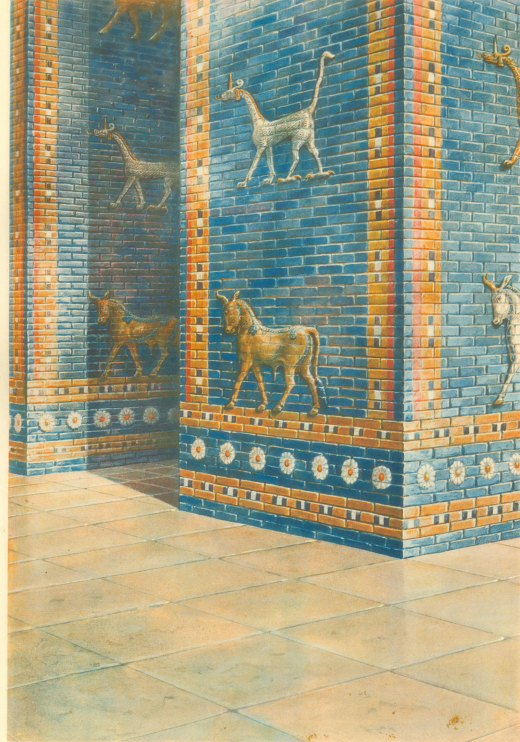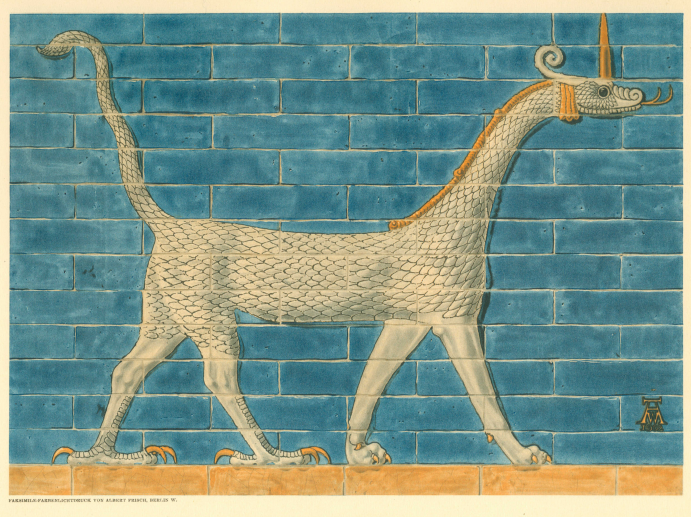Mesopotamia


Mesopotamia

After minor surveys and excavations by the British scholar Claudius James Rich (1811 and 1817), the British archaeologist and sometime diplomat Austen Henry Layard (1850), the French Orientalist Fulgence Fresnel, the German Assyriologist Jules Oppert…

It was the largest city in the world for approximately fifty years[2] until the year 612 BC when, after a bitter period of civil war in Assyria, it was sacked by a coalition of its…

Initial excavations at Nimrud were conducted by Austen Henry Layard, working from 1845 to 1847 and from 1849 until 1851.Following Layard’s departure, the work was handed over to Hormuzd Rassam in 1853-54 and then William…

Larsa was an important city-state of ancient Sumer, the center of the cult of the sun god Utu with his temple E-babbar. It lies some 25 km (16 mi) southeast of Uruk in Iraq’s Dhi…

Babylon was an ancient city located on the lower Euphrates river in southern Mesopotamia, within modern-day Hillah, Babil Governorate, Iraq about 85 kilometers south of modern day Baghdad. Babylon functioned as the main cultural and…

The story of archeology in Iraq began with the first references contained in the scriptures and classical blogs that referred to the civilizations and peoples of ancient Iraq and its effects, so many Arab and foreign travelers visited the archaeological sites scattered in Iraq

The Greek historian Herodotus describes the cultural progress of ancient Iraq:
“Every person in Mesopotamia, ancient Iraq, had a seal used as a signature, with which he signed the soft wage in the last letters or contracts written on him.”

Akkadian Civilization, about 2300-2200 BC

Visit our website at http://www.iraqhistory.org, or any website of ours that links to this privacy notice

Cylindrical seal with three Personals with mushkhushshu
Eyed sardonyx quartz (probably artifically dyed agate) cylinder seal; banded, brown, white-brown and white; a bearded god (probably the moon god Sin)

Cultures Assyrian Mesopotamia iraq date1250BC

Adab or Udab (Sumerian: 𒌓𒉣𒆠 , spelled UD.NUNKI) was an ancient Sumerian city between Girsu and Nippur. It was located at the site of modern Bismaya or Bismya in the Wasit Province of Iraq. The city-god of Adab was The Sovereign Appointed by Ellil Initial examinations of the site of Bismaya…

Clay tablet administrative tablet bureaucratic compilation of the Ur III dynasty register of fields and their yields over one year the largest cuneiform tablet known discovered in mesopotamia Iraq and now at the British museum2082…

Babylonian astronomical tablet At right this diagram shows how the distance traveled by Jupiter after 60 days 10º45 is calculated as the area of the trapezoid The Babylonians knew they could then divide this trapezoid…

is the capital of Iraq and the second-largest city in the Arab world after Cairo. It is located on the Tigris river. In 762 AD, Baghdad was chosen as the capital of the Abbasid Caliphate, and became its most notable major development project. Within a short time, the city evolved into a significant cultural, commercial, and intellectual center of the Muslim world. This, in addition to housing several key academic institutions, including the House of Wisdom, as well as a multiethnic and multi-religious environment, garnered it a worldwide reputation as the “Center of Learning”.

lalish Iraq small mountain valley village situated in the Shekhan District of Nineveh Governorate in northern Iraq The temple belongs to ancient times wherein many archaeologists and historians agree that the temple was a part…

Sippar (Sumerian: Zimbir) was an ancient Near Eastern city on the east bank of the Euphrates river, located at the site of modern Tell Abu Habbah in Iraq’s Babil Governorate, some 60 km north of…

Eridu lion / British officer Taylor found it in 1855 after the residents of the area showed him his place and when he was unable to move it, he buried it to be re-extracted in…

Members of the excavation expedition in Kurigalzu for the year 1944 with Mr. Fouad Safar (1), Dr.. Taha Baqir (2), Mr. Muhammad Ali Mustafa (3), Seton Lloyd (4), Ulrike Lloyd (5), Dr. Naji Al-Aseel, Director…